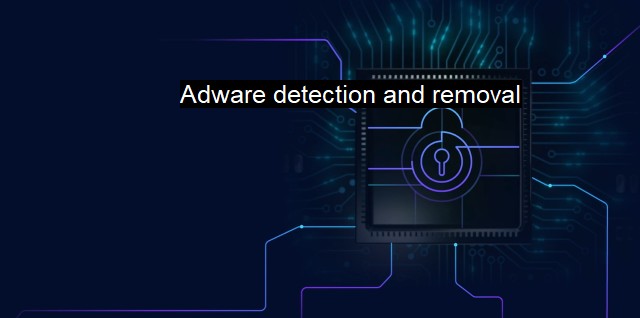What is Adware detection and removal?
The Importance of adware detection and removal in cybersecurity and antivirus software
"Adware detection and removal" is a fundamental aspect of cybersecurity, a broad field focused on protecting computer systems, networks, and digital data from various threats. adware is typically considered as a variety of malware - unwanted software that can cause various problems for users and organizations by paving the way for cybercriminals to exploit vulnerabilities in systems and networks.Adware is a type of software that automatically renders advertisements to generate revenue for the creator. Despite its harmless appearance, adware often targets your browsing patterns and personal information, utilising it without explicit permission. Coupled with these intrusive methods, adware accelerates the spread of additional malware by manipulating security measures and can disrupt system performance extensively.
Thus, this tarnish on online freedom makes adware detection and removal crucial for system health. Appropriately, the process begins with recognition. Adware detection requires preparatory understanding of adware characteristics. Commonly, adware triggers unexpected pop-up advertisements or redirects browsing activity to advertising websites. Changes in browser settings, slower performance, and undesignated applications spontaneously appearing might also imply adware infiltration. Armed with this awareness, it becomes easier to identify an attack.
More reliable and comprehensive analysis calls for professional assistance, involving tools embedded in antivirus programs. These antivirus programs dedicate resources to recognize and combat multiple types of malware, including adware. Following updated malware databases and behavioural monitoring mechanisms, these tools discern anomalous activity representing potential adware. Given relentless evolution and spread of new threats, it is essential for these databases to receive regular updates.
Upon confirming adware presence, these software commences removal. Removing adware involves identifying and exterminating every portion of the malicious software that has permeated a computer system. Most antivirus or anti-adware software should be capable of automatically scanning your computer for signs of adware and removing it efficiently and relatively quickly. Optimally, particular databases can be quarantined to restrict access and prevent further infestation while isolating the transgressor.
No detection and removal system is foolproof. Some adware is encoded efficiently enough to dodge antivirus software. Here, manual removal comes into play. Handling this requires advanced technical knowledge and escalated permissions, rendering it challenging for general users. An expert can evaluate cached files for insidious activity manually, although it remains time-consuming and arduous.
Prevention is the best cure. Protecting systems through potent adware detection routines and proactively combating them minimises infection likelihood and extrapolates the boundary against more dangerous threats. Installing reliable and substantial antivirus protection, using a firewall, maintaining software updates, employing browser security settings, prudent downloads can prevent adware contaminants from accessing a computer system.
Secure browsing habits complement technological adherence: avoiding suspicious links, abstaining from anonymous downloads, bypassing software bearing free ad-generated revenue unless sourced from reliable vendors, and consciously reading software agreements before proceeding curbs adware proliferation.
Hosting potential security threats and personal information theft, adware remains a cyber plague despite its sometimes unassertive exterior. Comprehensive understanding, enabled security measures, keystones for proactive combating, detection and removal tools, can grant secure, adware-free systems. Following this, users can leverage digital resources without privacy trespassing and inhibitive browsing.
'adware detection and removal' safeguards cyber entities from harmful silver-tongued software by unveiling, isolating, and eliminating them. This constant tug-of-war between security systems and invasive software exemplifies the perpetual essences of cybersecurity - being aware, being prepared, and never ceasing to adapt.

Adware detection and removal FAQs
What is adware?
Adware is a type of malicious software that displays unwanted advertisements on your device. It is often bundled with other free software and can collect your personal information.How can I detect adware on my device?
You can detect adware on your device by using an antivirus software that scans for malware. Look for any suspicious pop-ups or advertisements that appear when visiting websites. You can also check your browser extensions for any unknown ones that may have been installed without your knowledge.How can I remove adware from my device?
You can remove adware from your device by using an antivirus software that specializes in detecting and removing adware. You can also manually remove it by going into your device's control panel and uninstalling any suspicious programs. You can also reset your browser settings to their default state to remove any unwanted browser extensions.How can I prevent adware from infecting my device?
You can prevent adware from infecting your device by being cautious when downloading free software and always reading the terms and conditions. Avoid downloading software from untrusted sources and choose custom installation options when available to avoid unwanted programs. Keep your antivirus software up-to-date and scan your device regularly for malware.| | A | | | B | | | C | | | D | | | E | | | F | | | G | | | H | | | I | | | J | | | K | | | L | | | M | |
| | N | | | O | | | P | | | Q | | | R | | | S | | | T | | | U | | | V | | | W | | | X | | | Y | | | Z | |
| | 1 | | | 2 | | | 3 | | | 4 | | | 7 | | | 8 | | |||||||